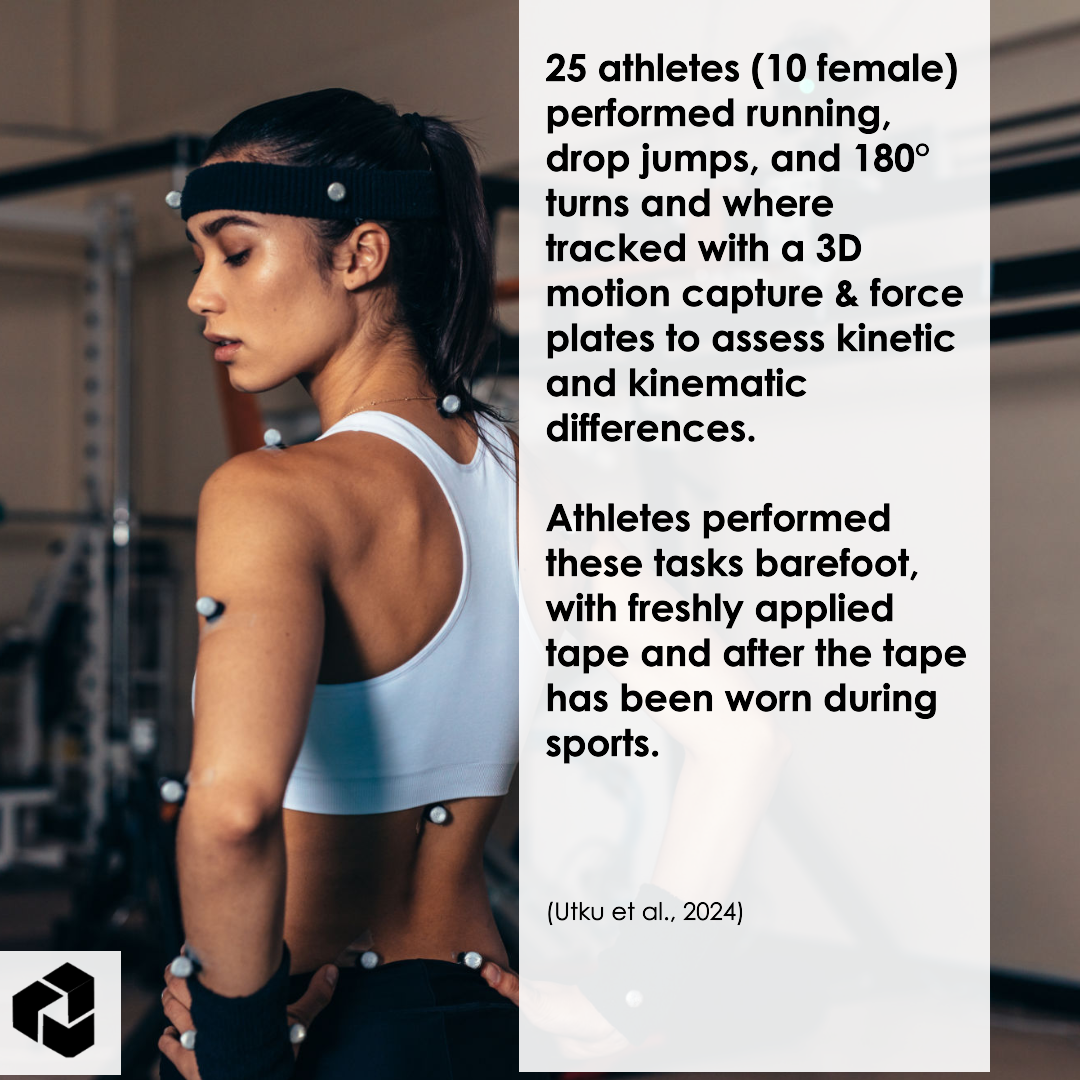Ankle Injuries: Does Taping help?
🔍 A recent study investigated the effects of ankle taping on lower extremity biomechanics related to injury risk and examined how these effects evolve with sports-specific activity.
⚙️ Using a randomized, repeated measures design, the study assessed three conditions—barefoot, tape applied fresh, and tape after sports-specific use—across both sexes. Twenty-five healthy individuals (including ten females) performed a series of sports-specific movements, such as running, drop jumping, and executing a 180° change of direction, with kinetic and kinematic data collected via 3D motion capture and force platforms.
📉 The findings revealed that both fresh taping and post-exercise taping significantly reduced peak ankle inversion, thereby protecting the ankle joint. Most biomechanical risk factors associated with anterior cruciate ligament injuries or running overuse were either unchanged or reduced following fresh taping. An exception was noted in the peak loading rate of the resultant ground reaction force, which increased by 4%–18% across movements. After approximately 15 minutes of sports-specific activity, some taping-induced effects were maintained while others gradually reverted toward barefoot conditions, highlighting a variable response over time.
💡 In conclusion, ankle taping appears effective in reducing key biomechanical risk factors for ankle sprains without elevating those linked to ACL or overuse injuries. Further research is warranted to explore the duration of these protective effects across various sports and to determine the impact on individuals with chronic ankle instability, ultimately enriching the understanding of ankle taping’s role in injury prevention.
Full Text: https://pubmed.ncbi.nlm.nih.gov/39030083/




